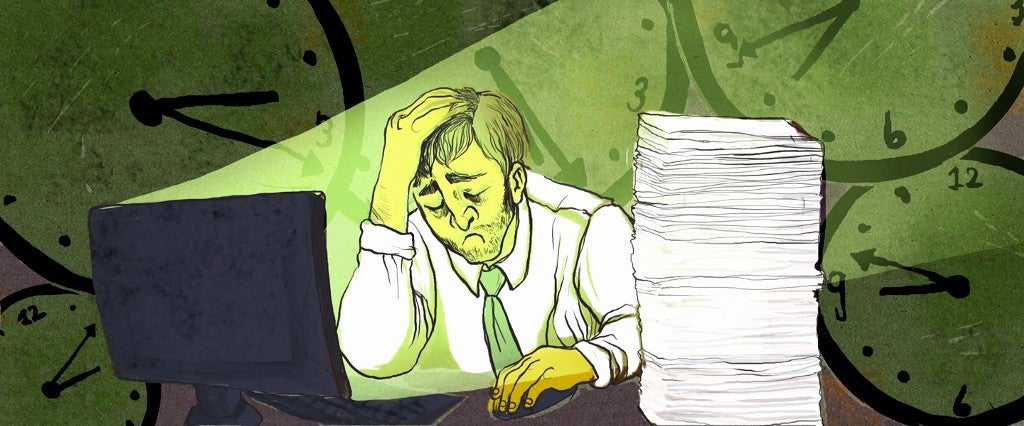Deadlines, deadlines: They’re scary enough as it is, but sometimes they can even be fatal. Working yourself to the bone is more of a thing than many of us may realize, in fact. In Japan it’s such a regular occurrence that there’s a word for it: “Karoshi” (that is, “death from overwork”). Karoshi was most recently in the headlines in December, when an exhausted employee’s suicide prompted the CEO of Japan’s biggest ad agency to step down. In China’s similarly hardcore corporate culture, some 600,000 employees die each year from coronaries, strokes, brain hemorrhages and other conditions related to workplace stress and chronic lack of sleep, according to China Youth Daily.
While such extreme cases of terminal overtime may not be quite as commonplace in America, exactly how much grindstone can the average human nose withstand? And how many hours a week make for an optimal work-life balance? Let’s look at the numbers.
How’s My Striving?
There have been a surge of studies in the past decade or so looking at the relationship between working hours and well-being, and a notable number of findings seem to converge on one hard limit: It seems 55 hours a week is the line you shouldn’t cross (or even get too close to) if you want to make it to retirement intact.
According to research published in 2015 in British medical journal The Lancet, those clocking 55 hours a week are at 33 percent greater risk of a stroke, and 13 percent more likely to suffer from coronary heart disease, than people working a 40-hour week or less. Other investigations have linked 55 hours of weekly toil to depression, insomnia and even Type 2 diabetes, among many other office-borne afflictions.
More demoralizing still for the average workaholic is that, according to a 2014 study by John Pencavel at Stanford, any work you might be cranking out above a 50-hour-a-week threshold may be wasted effort. His findings suggest that result for a worker is “fatigue or stress that not only reduces his or her productivity but also increases the probability of errors, accidents and sickness that impose costs on the employer.” In other words, from 50 hours onward, productivity starts to decline — so much so, in fact, that “output at 70 hours differs little from output at 56 hours.”
That’s a solid 14 hours a week you may as well have spent spinning in your office chair, laughing maniacally at the ceiling.
The Six-Hour Sweet Spot
Happily, though, the American work week tends not to be anywhere near the red zone. Figures from the Organisation for Economic Co-operation and Development for 2014 suggest the average full-time job in the U.S. requires 38.6 hours of work each week. Admittedly, this is pretty much a third of your waking life, but comfortably less than the average grind in the likes of Israel (40.4 hours a week), Mexico (44.7) and Turkey (49.1), which tops the OECD’s diligence list.
So what’s the ideal work/leisure split? There’s no real consensus on this, but many well-being campaigners see an officially mandated 30-hour week as a baseline cure for the global epidemic of morbid workaholism. City authorities in Gothenburg, Sweden, for example, have been experimenting with introducing a six-hour working day (while retaining an eight-hour salary) in nursing homes and hospitals. This follows the lead of other Swedish workplaces such as Toyota, which, after 13 years of 30-hour work weeks, reports that staff productivity and absentee rates beat those of a 40-hour standard, hands down.
Such radical, government-sponsored adjustments of the work-life equation aren’t as unthinkable as you might expect. In 1933, a Congress in the grip of the Great Depression nearly adopted a strict six-hour day, five-day work week for American workers: The legislation passed the Senate and only crashed and burned when FDR withdrew support for it at the last minute. This policy might well have made life for the average American less about making a living and more about just having a life. But sadly, in today’s work environment, we’ll likely never know.
Ah well, enough time wasted on wondering what might have been — better get back to the old nine-to-nine.

